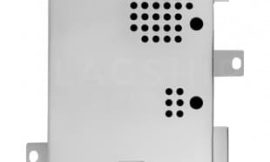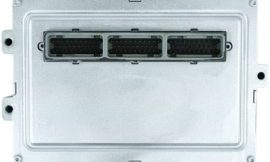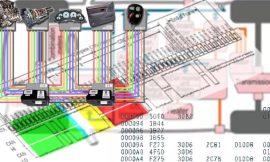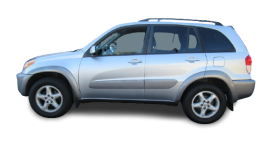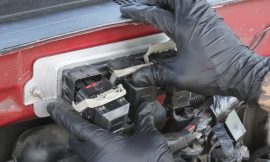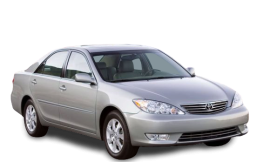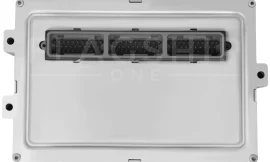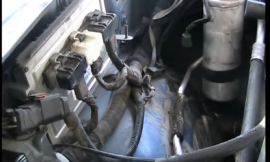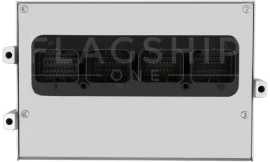Last updated on October 9th, 2023 at 05:34 pm
The 2004 Ford F-150 is a solid choice if you’re looking for a full-size pickup truck that won’t disappoint. The Lariat model, which has a 300-horsepower V8 engine, is one of the most popular options for this powerful pickup truck. Interior amenities include leather-trimmed seats and automatic climate control to ensure a pleasant trip for you and five other passengers. The 2004 Ford F-150, which debuted with a new design, had been eagerly anticipated by many of the truck’s ardent devotees. This full-size truck swiftly rose to the top of the sales charts once introduced with various trim levels and new solid engine options.
The basic model of the 2004 F-150 comes standard with a 4.2L V6 with 202 horsepower, making it one of the most powerful engines on the market. What are you looking for? Consider a vehicle with a 4.6L or 5.4L V8 engine.
There are three body types available for the 2004 F-150, each with a different number of seats: a three-seat standard cab, a four-seat extended cab, or a five-seat crew cab. There are also three different bed lengths, ranging from 5.5 feet to 6.5 feet to eight feet. However, the 2004 model has demonstrated electrical and engine issues, resulting in new challenges. PCM users regularly bring up the following problems:
1. Power Rear Sliding Window Defroster Failure
An electrical contact failure in the defroster is common for vehicles with motorized rear sliding windows with integrated defrosters. Moving and fixed window panes each have a little tab positioned on their lower edges that serve as a contact point. The defroster stops when this contact breaks due to the rear window defroster circuit being part of the heated side-view mirrors. There is currently no recall for this issue, and the stated repair is to replace the complete rear window system.
2. Transmission Shifting Problems
In 2004, Ford issued a recall for F150s equipped with automatic transmissions. It has been claimed that certain communications in this year’s range started shifting into second gear without indication. An unsafe situation might arise when driving at any speed, especially on the highway. The solution is as simple as performing a flash update. There have been reports of gear indicator numbers disappearing after this update. Although this does not impede the vehicle’s performance, it is unpleasant.

3. Spark Plugs Breaking Off
The Ford F-Series had a lot of issues with 4.6 spark plug problems from 2004 to 2008. In the same way, Ford 5.4 spark plug issues have been widespread on these versions as well.
Plugs that won’t come out intact have been one of the most difficult Ford truck spark plug issues. You may break off part of the spark plug tip while removing the spark plugs from a Ford F-150 with a three-valve engine built-in 2004-2008. The fault might be partly attributed to the plugs’ claimed extended service life of 100,000 miles. There is an issue with that length of time since it takes the truck out of the standard warranty coverage. You may use the search function to find articles.
5. Spark Plug Ejection
The most often reported issue with Ford F-150s from 1997 to 2003 was spark plug ejection. Motorists have advanced several hypotheses to explain the origin of this issue. Auto experts think the plug design was problematic, claiming that the cylinder heads’ flimsy, four-thread aluminum aggravated the problem.
There is also the possibility that the spark plugs were improperly torqued and fastened on the assembly line. As a result, the aluminum threads were prone to be eroded by the vibrations of the sparks. The spark plugs would fall out if the metal were worn down.
The 2001-2004 F-150 trucks are the most likely to have blown spark plugs. The issue has also been documented in F-150s from 1997 to 2000 and 2005 to 2008. Ford first claimed that the problem was caused by people over-torquing their new spark plugs. Owners of the F-150 mainly complained about the expulsion of the vehicle’s original spark plugs…
6. Exhaust Manifold Leaks
This is one of the most frustrating problems that drivers using ford 150 encounters. It is mainly characterized by a Ticking noise when the engine is cold and the smell of exhaust fumes
Causes of a Bad Exhaust Manifold
When the engine is cold, the ticking noise is likely audible. The metal on the exhaust manifold expands when the engine heats up, filling up any cracks or defects and removing the ticking sounds.
A damaged exhaust manifold stud may also be a problem with the manifold. Aside from the gasket and manifold, any bolts holding the gasket in place on the engine are also used to secure the exhaust manifolds’ studs in the engine’s block. On the 11th generation F-150, these studs tend to rust and break, and it is most frequently the one near the firewall that does so. The exhaust manifold may separate from the engine block if the stud violates. This can lead to an air gap and deterioration of the gasket, which will cause the ticking noise to worsen over time. This may also result in a noxious odor from the exhaust.
Carbon monoxide poisoning can result from exhaust leaks. Repairing an exhaust issue as quickly as possible is highly recommended. Only the broken stud in the exhaust manifold needs to be replaced. The exhaust manifold should be removed, inspected, and planned before reinstalling.
Conclusion
In conclusion, the 2004 ford Ram PCM issues are extensive, and many of them can be fixed by taking the car to a mechanic. Checking fluid levels before any significant errands can help prevent substantial damage in the future, rather than dealing with minor annoyances such as hard gear shifts during the initial drive time until something is correctly addressed before the vehicle is driven. Always do your research before attempting any repairs, especially if they are more complicated than the majority of them. Concerning shifting gears, for example, adding new fluid maybe all. That is needed, as it will allow for better handling while driving after allowing space between moving parts in the system for smoother operation. However, it is necessary to have your Car inspected initially, and regular maintenance is also recommended to avoid transmission difficulties. As a result, consider the numerous options that will bring you to the solution.
FAQs
How do you diagnose a lousy PCM Ford?
To effectively diagnose a lousy PCM, the following symptoms are evidenced:
- The check engine light came on making the car fail to start or starts roughly, and there was also a very sudden decrease in gas mileage
- Failure of the emission test.
- Engine stutters or stalls.
- Random shifting or erratic shifting.
· A PCM-related error code is also evidenced
How do you reset the PCM on a 2004 Ford F-150?
With the ignition key removed. The negative battery cable should be disconnected; at this time, turn the ignition key as if you were trying to start the vehicle. Let it sit for 10 to 15 minutes before releasing the key and turning it off. Finally, take out the ignition key.
What are the common problems with the 2004 Ford F-150?
Exhaust leaks have been recorded on some ford 150 PCM. Customers have reported hearing a ticking noise coming from the exhaust manifold and subsequently finding broken bolts in the manifold. Severe engine difficulties, automatic gearbox troubles, and brake rotor failures are the most common and frustrating 2004 ford 150 PCM
Where is the PCM located on a 2004 Ford F-150?
The PCM is positioned behind the driver’s kick panel, with the connector extending through into the firewall on most contemporary F-150s. Where is the PCM located on a 2004 Ford F-150?






